According to handicraft experts, to conquer the international market, businesses not only need to maintain their identity but also proactively improve production standards.

Greening is a challenge
The handicraft industry is a unique field, distinctly different from many other manufacturing industries. Most production facilities are concentrated in craft villages, with small scale and high community character. However, it is from these craft villages that products are born that contain the “soul” of the nation, crystallizing cultural values, identity and creative spirit typical of the Vietnamese people.
According to the Chairwoman of the Hanoi Handicraft and Craft Village Association, Ha Thi Vinh, bringing culturally significant products to the international market is both an exciting and challenging journey. In that context, Vietnam’s signing of free trade agreements with many countries is considered a valuable opportunity and a condition for handicraft enterprises to expand their markets, improve their competitiveness and bring Vietnamese products to the international market.
However, green transformation is becoming a mandatory requirement of the international supply chain. According to Ms. Ha Thi Vinh, ceramic and handicraft export enterprises are forced to make large investments to build waste treatment systems, operate clean production and meet environmental standards. This creates great financial pressure, especially when most brands in the industry are small and medium enterprises.
At the same time, conflicts and wars in the world are strongly affecting international trade, especially in large markets such as the EU. Unlike essential industries such as textiles or footwear, handicraft products mainly serve the needs of decoration and art enjoyment, not essential items in daily life. When the global economy is in trouble, consumers often cut spending on this product group, creating great challenges for businesses. Therefore, despite the interest of many international customers, Vietnamese businesses still face difficulties in meeting large orders and uniform quality requirements. This is both an opportunity for development and a challenge to overcome.
As the trend of green consumption and sustainable development becomes a mandatory global standard, major markets such as Europe and the US are increasingly imposing more stringent requirements. Enterprises wishing to export must meet environmental and social responsibility certifications. This is not only a commitment to sustainable development, but also a “passport” for Vietnamese products to access high-end markets.
However, achieving these standards requires factories to be large enough in scale, with modern production processes and professional management systems, a major challenge for most Vietnamese handicraft establishments today.
Businesses must raise production standards.
Although the international market still has a lot of room for the handicraft industry, to meet export standards, businesses face many challenges. These difficulties are not only related to production scale, but also management and operational capacity, directly affecting the sustainable development of the entire industry.
A typical example is the packaging problem. Ceramics are fragile and need many layers of protection. However, the green consumption trend has forced businesses to switch to environmentally friendly materials. Some units have tried using honeycomb paper and honeycomb cardboard, but domestic supply is limited and the cost is high.
Regarding raw materials, although Vietnam has abundant ceramic mineral reserves, according to the Chairwoman of the Hanoi Handicraft and Craft Village Association Ha Thi Vinh, exploitation and management are not effective, leading to unstable supply. Many businesses have to import raw materials from abroad, increasing costs and reducing competitive advantage.
Logistics is also a bottleneck. International standards allow a 20-foot container to hold 24 to 28 tons of goods, but domestic transport regulations only allow 20 to 22 tons. This forces businesses to divide goods, increasing transportation costs. Ms. Ha Thi Vinh emphasized that this is an issue that needs to be resolved to reduce logistics costs for exports.
To overcome these barriers, according to Ms. Ha Thi Vinh, it is necessary to build typical models in craft villages, especially for industries with great export potential. In this model, the State plays the role of "midwife", supporting premises and equipment, while creating conditions for businesses to deploy production to international standards. Inviting experts to advise and guide will help form models that are eligible for export, from which smaller businesses can learn, standardize processes and improve competitiveness.
In addition, trade promotion plays a key role. Organizing international trade promotion activities, participating in major fairs, and meeting directly with foreign partners are necessary to expand the market and increase the opportunity to sign contracts.
In addition, it is necessary to promote the organization of international fairs right in Vietnam, helping businesses reach international customers without spending much money. Another advantage is that attendees can directly visit the factory, evaluate the potential of the business, thereby increasing the opportunity to sign contracts.
Source: https://hanoimoi.vn/nganh-thu-cong-my-nghe-no-luc-dap-ung-yeu-cau-san-xuat-xanh-722668.html



![[Photo] Cutting hills to make way for people to travel on route 14E that suffered landslides](https://vphoto.vietnam.vn/thumb/1200x675/vietnam/resource/IMAGE/2025/11/08/1762599969318_ndo_br_thiet-ke-chua-co-ten-2025-11-08t154639923-png.webp)




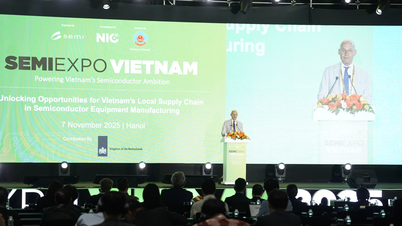











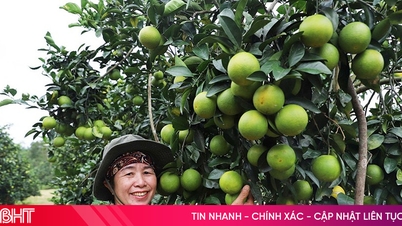







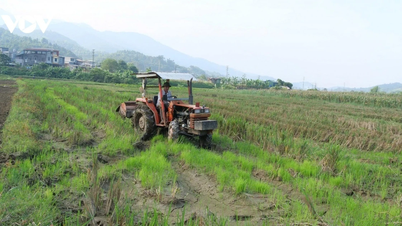

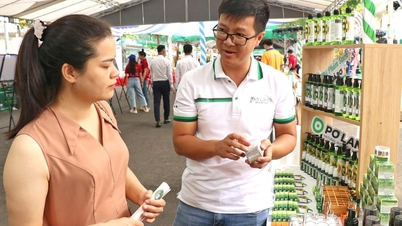






















![[Video] Hue Monuments reopen to welcome visitors](https://vphoto.vietnam.vn/thumb/402x226/vietnam/resource/IMAGE/2025/11/05/1762301089171_dung01-05-43-09still013-jpg.webp)




































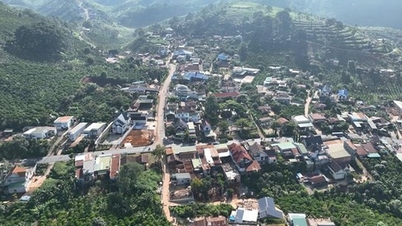











![Dong Nai OCOP transition: [Part 2] Opening new distribution channel](https://vphoto.vietnam.vn/thumb/402x226/vietnam/resource/IMAGE/2025/11/09/1762655780766_4613-anh-1_20240803100041-nongnghiep-154608.jpeg)













Comment (0)